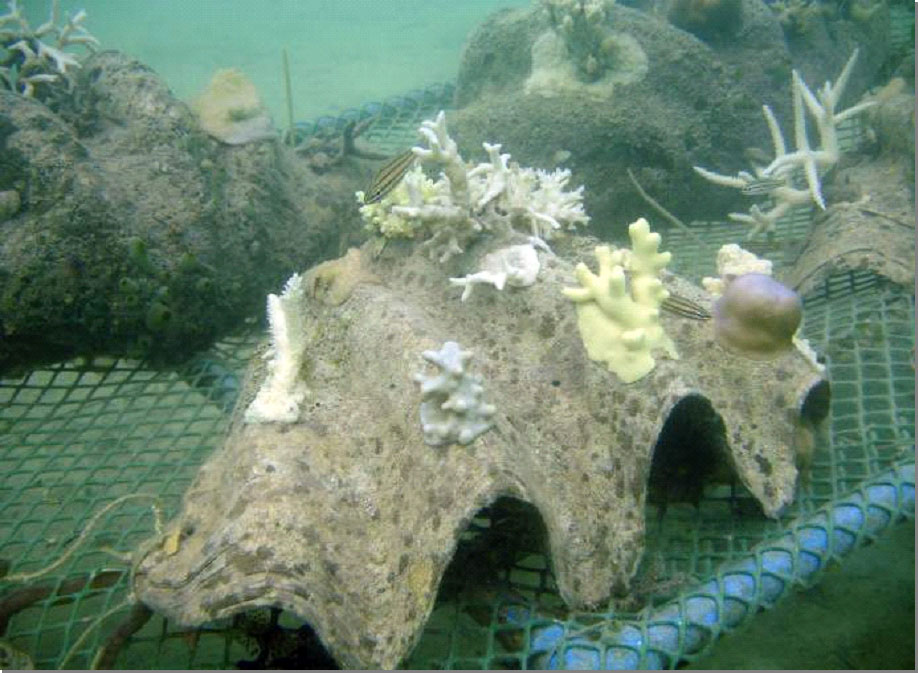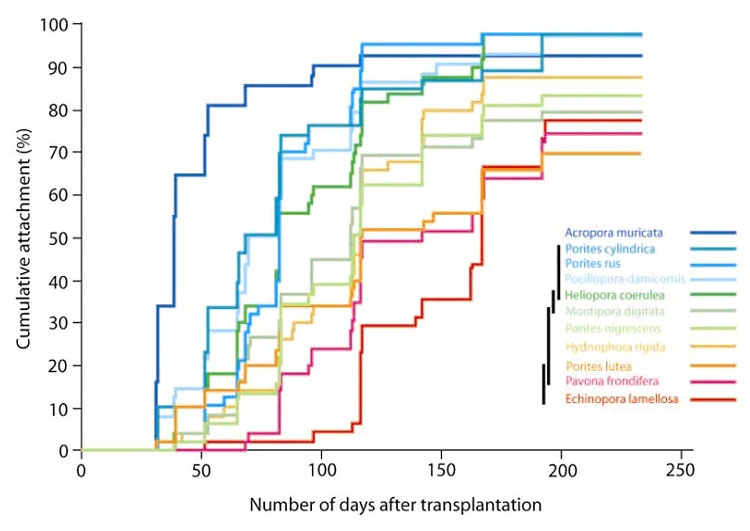|
|
Staff involved:Alasdair Edwards, Dr James Guest, Ms Chiara Franco (Newcastle University), Dr Rommi Dizon, Kareen Vicentuan, Prof. Ed Gomez (University of the Philippines)Funding:European Commission
Corals on clam shells during bleaching event in July 2007
Progress of self-attachment of 11 coral species after transplantation |
Developing ubiquitous restoration practices for Indo-Pacific reefsProject50 small (mean diameter 23-30 mm) and 50 large (mean diameter 51-78 mm) fragments of each of 11 species of coral were transplanted to standardised substrates (giant clam shells; locally available as a by-product of Tridacna mariculture). Their rates of self-attachment (for first 6 months) and survival and growth were then followed for 3 years during which a coral bleaching event occurred (June-July 2007) about 18 months after transplantation. Further, 30 intact control colonies of each species and 30 donor colonies (from which 10% of colony was taken to provide the fragments) were also monitored for 3 years. This allows us to determine a) whether transplanted fragments have lower survival than intact colonies, and b) whether removal of fragments compromises the survival of donor colonies. The aim of the project is to assess the suitability of a range of common coral species for reef restoration and see whether a larger intial size of fragment confers any significant benefits in terms of survival. The bleaching event has also allowed the susceptibility of each of the coral species to anomalous warming events to be documented. SignificanceIf small coral fragments survive equally well as large ones then one can restore larger areas with the same amount of source material and thus reduce the amount of damage to the existing healthy reef if obtaining material by pruning donor colonies. Further, if coral fragments are being reared in a nursery, they do not need to be reared for so long before outplanting to the degraded reef, thus reducing the nursery rearing cost. Although some coral species (e.g. branching acroporids and pocilloporids) grow fast and have thus been favoured by those undertaking reef restoration, they are also considerably more susceptible to bleaching and subsequently dying during El Nino-Southern Oscillation events. With a good knowledge of relative survival and growth one can either select species which offer reasonable growth and good survival or a mix of species with different characteristics to ensure a resilient transplant community. References
|

